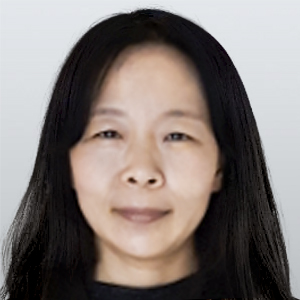News Analysis
In just a year, China has erased South Korea’s lead as the top provider in organic light-emitting diode (OLED) displays.
OLED displays offer superior color accuracy, faster response times, and greater energy efficiency than traditional liquid crystal displays (LCDs). OLED screens are on many devices that we use daily, such as high-end TVs, monitors, and smartphones. Apple has used OLED screens in its iPhones since 2017, starting with the iPhone X. However, OLED production is notoriously difficult because of its complex manufacturing process, expensive equipment, and high defect rates.
According to data released last month by London-based market research firm Omdia, China’s global unit sales share rose to 49.7 percent in the first quarter of this year compared with South Korea’s 49 percent. The firm’s data show that South Korea was leading in the same quarter last year, with a 62 percent market share over China’s 37 percent.
Despite Chinese companies catching up in unit sales, South Korean companies’ revenue share is still double that of China. This means that the Chinese units are sold at half the South Korean prices.
Even Japan, known for its technological expertise, holds only about 2 percent of the OLED global production capacity, according to Statista. South Korea has long been the dominant producer, so the recent news that China has overtaken it as the world’s top OLED producer has surprised many in the industry. This marks a significant shift in the global tech landscape.
In an interview with The Epoch Times, Wang Chih-Sheng, director of Asia-Pacific Elite Interchange Association, a Taiwanese think tank, said that “talent acquisition, technology theft, and mergers and acquisitions” are the three major strategies China uses to acquire foreign technology.
He noted that South Korea, once dominant in high-tech manufacturing, is increasingly being outmaneuvered by Chinese companies. This trend undermines South Korea’s global market position and poses risks to Western nations relying on these technologies for consumer goods and defense applications.
“When Chinese companies dominate key industries, they not only control pricing but also gain influence over global technology standards,” Wang said. “For example, if Chinese companies dominate the 5G market, they can establish the technical standards other countries must follow. This influence extends far beyond economics and into national security and international politics.”
Broader Pattern of IP Theft
China’s ascension to OLED leadership is marred by accusations of predatory practices. Reports suggested that its rapid advances in both OLED and LCD technologies were driven by frequent and systematic technology theft, often targeting South Korea’s most advanced innovations.BOE Technology Group, founded in 1993 in Beijing, initially focused on selling vacuum devices and electronic components but quickly evolved into a global leader in display technology, particularly OLEDs, because of substantial backing from the Chinese Communist Party (CCP). As China’s leading display manufacturer, BOE is a prime example of the CCP’s strategy to dominate crucial global technologies, driving China’s ambitions in both commercial and military sectors.
“China benefits from its state-driven economic model, where the government provides significant financial backing to key industries. This model allows Chinese companies, like BOE, to offer products at lower prices, often undercutting international competitors,” Wang said.
“This form of state support is not typical in Western economies, where companies must rely on private investments and profits to grow.”
In 2002, BOE acquired the Hynix Semiconductor subsidiary Hydis, a South Korean company known for its advanced LCD technologies. However, in 2006, BOE abruptly declared Hydis bankrupt and withdrew its operations back to China.
The South Korean display industry suspected BOE of technology theft, and in 2008, the Seoul Central District Prosecutors opened an investigation.
They found that the two companies had signed a licensing agreement and merged their computer networks in 2004. Prosecutors indicted the former chairman and an executive of Hydis for breach of trust. They alleged that the two provided BOE far more than what was agreed upon, which resulted in the leak of 4,331 industrial secrets and about 200 core TFT-LCD technical data to China and severe harm to Hydis.
The alleged theft of South Korean technologies by Chinese entities extends beyond BOE. Multiple incidents involving former employees of leading South Korean companies, such as LG Display and Samsung, have pointed to a broader pattern of potentially systematic intellectual property theft.
In August, South Korean prosecutors arrested former LG Display employees for allegedly violating South Korea’s Industrial Technology Protection Act and the Unfair Competition Prevention and Trade Secret Protection Act. These individuals are accused of leaking advanced OLED technology to Chinese companies.
One of the arrested individuals, a former LG Display employee with two decades of experience, is accused of orchestrating the theft after joining an unnamed Chinese display company in 2021. He reportedly conspired with then-current LG Display employees to steal large-scale OLED production technology, significantly bolstering China’s capabilities in this critical industry, according to South Korean local media.
This case is far from isolated. In July, a former Samsung researcher was sentenced to six years in prison for leaking Samsung’s OLED manufacturing technology to China. The stolen technologies, including Excimer Laser Annealing (ELA) and OCR Inkjet Equipment, are valued at about $250 million and are pivotal in maintaining the quality and efficiency of OLED production.
According to local media, in July 2023, the South Korean Supreme Court sentenced the former representative of TOPTEC, a South Korean tech firm, to three years in prison for selling Samsung’s OLED folding technology to four Chinese companies, including BOE. This technology was developed over six years with an investment of more than $120 million and the efforts of 38 engineers.
Recognizing the strategic importance of such innovations, the South Korean government has designated more than 100 technologies in high-tech fields such as display, semiconductor, battery, and shipbuilding as “National Core Technologies.” These innovations are protected under the Industrial Technology Protection Act, which guards against unauthorized transfer or leakage.

A Flex-S prototype displayed at the South Korean manufacturer Samsung and OLED stand at the Mobile World Congress in Barcelona, Spain, on Feb. 27, 2024. (Pau Barrena/AFP via Getty Images)
Brazen Infiltration
Earlier this year, South Korean authorities charged several individuals, including current and former Samsung SDI and SK On employees—two South Korean battery companies—with violating the Industrial Technology Protection Act.These employees were accused of colluding with Svolt Energy Technology, a Chinese battery company, to steal core technologies from South Korean battery giants. Authorities believe that Svolt’s parent company, Great Wall Motor, China’s largest SUV maker, organized the theft to obtain sensitive information crucial for electric vehicle battery development. They were then referred to the prosecution for further action, according to local reports.
Svolt established its Korean branch, Svolt Korea, in 2020 and set up a research facility at Korea University’s TechnoComplex, an industry–academy collaborative research center in Seoul, South Korea, in 2021. According to local media, before and after launching Svolt Korea, the company joined various battery industry associations and targeted key researchers. They offered double salaries, provided large bonuses, and allowed employees to work domestically. Unlike previous cases in which workers were required to relocate or travel to China, this marks the first time that authorities have identified such a strategy.
“China often uses multiple intermediaries to obscure its involvement in acquisitions. For example, a Chinese company may set up front companies overseas to buy out other firms, making it difficult to track the true origin of the capital. This method allows China to acquire valuable technologies while avoiding detection,” Wang said.
A Growing Threat
Data from the Korean National Police Agency show that the vast majority of South Korea’s leaked core technologies end up in China, with 83 percent of such cases in the first half of this year involving China as the destination.From 2013 to October 2023, the proportion of South Korean technology leaked overseas increased yearly, with 67 percent of it going to China, according to data from the National Police Agency.
Beyond the display industry, South Korea’s leadership in key industries such as batteries and shipbuilding has been increasingly overshadowed by China in recent years, putting South Korea in second place. In the first quarter of this year, Chinese companies captured about 52 percent of the global electric vehicle battery market. In comparison, South Korean firms held only about 23.5 percent, according to data from SNE Research.
A recent report from the Korea Institute for Industrial Economics and Trade shows that in 2023, China surpassed South Korea to become the global leader in the shipbuilding industry value chain.
The semiconductor sector, a backbone of modern technology, is also a major target. In late 2023, South Korean prosecutors detained a former Samsung Electronics department head, surnamed Kim, for leaking critical DRAM technology to ChangXin Memory Technologies (CXMT), China’s largest DRAM manufacturer.
Kim, who joined CXMT in 2016 with a salary of more than $750,000, caused Samsung and its partners an estimated $1.7 billion in losses, according to prosecutors.
To prevent technology theft, Wang emphasized the need for countries to strengthen regulations and protections around their core technologies. He noted that the United States has implemented stricter controls on Chinese nationals coming to study or work and restricted companies with Chinese capital from accessing certain technologies. However, he warned that as China narrows the technological gap through illicit means, the risks to national security and economic stability continue to grow.
Xin Ning contributed to this report.
















